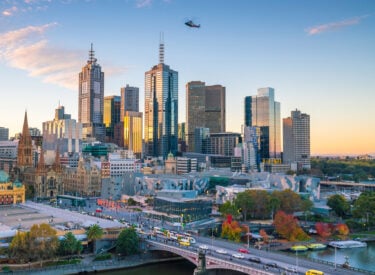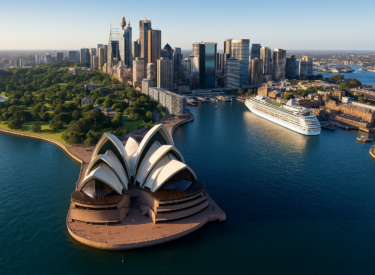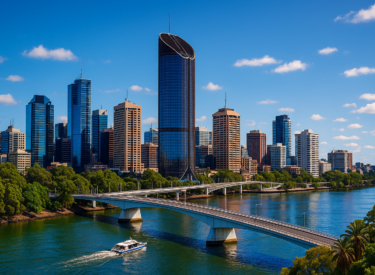
Key takeaways
While the world fixates on tanks and treaties, Russia’s most pressing crisis isn’t NATO — it’s population decline.
Russia’s shrinking, ageing, and unhealthy population is limiting its military, economic, and geopolitical capabilities.
Russia’s military spending is high on paper (4.5% of GDP), but riddled with inefficiencies and corruption.
The Ukraine conflict exposed its logistical failings, outdated gear, and reliance on undertrained conscripts.
Russia’s population peaked in the early ‘90s and has been in steady decline ever since.
Current fertility rate is 1.5 — far below replacement level.
The last remaining “bump” in military-age men will disappear in 12–15 years — making this Putin’s final window to act militarily before conscription dries up.
When we think of global conflict, we usually focus on tanks, troops, or treaties.
But every now and then, the real battlefield lies in something far less obvious — birth rates, life expectancy, and population pyramids.
And right now, the most pressing challenge Vladimir Putin faces isn’t NATO, it’s Russia’s ticking demographic time bomb.
In the latest episode of the Demographics Decoded podcast, Simon Kuestenmacher and I explore why Russia’s population crisis is pushing Putin into high-stakes geopolitical gambits and what this means for the future of the region and the world.
For weekly insights and strategic advice, subscribe to the Demographics Decoded podcast, where we will continue to explore these trends and their implications in greater detail.
Subscribe now on your favourite Podcast player:
Russia's economic weight: a giant with weak legs
Before we even get to demographics, it's worth setting the scene with a look at Russia’s economy.
You might assume that with a population of over 140 million and vast natural resources, Russia would rank as a global economic powerhouse.
But that’s far from the case.
When the Ukraine conflict started in 2022, Russia’s economy was roughly on par with Australia’s in terms of total GDP, despite having more than five times the population.
As Simon noted in our discussion, this discrepancy exists because Russia is a resource-exporting economy with limited innovation, weak consumer industries, and entrenched corruption.
Outside of energy, agriculture, and military hardware, Russia produces little of value on the world stage.
Compare that to Australia, which, although also resource-driven, benefits from transparency, political stability, and a strong services sector, including tourism and international education, all sectors that Russia lacks.
This economic fragility has only worsened since the annexation of Crimea in 2014 and the ensuing waves of international sanctions.
Russian GDP per capita sits around USD $10,800, versus Australia’s at more than $57,000.
This disparity creates immense internal pressure, especially in a country trying to project power externally.
A military on paper, not in practice
Russia devotes about 4.5% of its GDP to military spending. More than twice Australia’s defence allocation.
That may sound intimidating, but as Simon pointed out, much of this spending vanishes into the black hole of corruption.
The actual effectiveness of Russia’s military has been wildly overstated, as seen in its underwhelming performance in Ukraine.
What the Russians have invested in strategically and successfully is cyber warfare and propaganda.
Their offensive digital capabilities have been formidable, from election meddling to disinformation campaigns.
But brute military force?
Not so much.
Outdated equipment, logistical failures, and conscripted troops have exposed the limits of Russia’s conventional power.
And here’s the kicker: even a well-equipped military is useless without soldiers.
That’s where demographics come in.
The coming demographic collapse
Russia is no longer a land of growing families.
In fact, its population peaked in the early 1990s and has been in long-term decline ever since.
That’s almost unheard of for a nation trying to position itself as a major global player.
At the heart of this problem is Russia’s extremely low birth rate.
After the fall of the Soviet Union, births plummeted to below 1.2 children per woman, well below the replacement level of 2.1.
Putin’s government briefly managed to lift this to around 1.7 through financial incentives and cultural messaging, but it’s since fallen again to about 1.5, the European average.
Here’s the catch: the slight uptick in births in the late 2000s created a temporary bump in the number of young adults, specifically, men aged 18 to 27, the sweet spot for military conscription.
That group is reaching military age right now and will remain a viable recruitment base for only about another 12 years.
After that, the supply of new recruits and workers will decline sharply and permanently.
As Simon succinctly put it, “You do this now or never.”

Why Putin had to act now
Putin isn’t just acting out of imperial nostalgia, though that’s certainly part of it.
His view of the collapse of the Soviet Union as the "greatest geopolitical catastrophe of the 20th century" isn’t just rhetoric.
It reflects a deeply held belief that rebuilding the Russian empire is essential for the country’s security and prestige.
But to do that, you need boots on the ground.
And in 10–15 years, there simply won’t be enough boots left.
This is Putin’s last roll of the demographic dice.
He’s not constrained by election cycles like Western leaders.
He’s been in power since 1999, and given his age (72), even his personal window to act is shrinking.
The demographic urgency aligns with his political timeline.
The war in Ukraine wasn’t just about land or resources.
It was about buying time and people for an empire that’s running out of both.
Where are the old Russians?
Russia's demographic woes are compounded by another strange reality: it’s missing its elderly.
Post-Soviet Russia saw a catastrophic drop in life expectancy, down to just 57 years for men in the 1990s.
This wasn’t due to war or famine, but alcohol.
Widespread vodka consumption (often home-brewed) devastated male health outcomes.
Simon referenced the book Vodka Politics, which documents how alcohol played an outsized role in Soviet and post-Soviet governance.
In effect, the state propped up its budget by taxing alcohol, while its workforce drank itself into an early grave.
So now, unlike in Australia, where an ageing population is placing pressure on healthcare and pensions, Russia simply doesn't have large cohorts of retirees.
That means lower short-term social costs, but at an enormous human and productivity cost.
And here’s the ironic twist: Russia has started aging now that it's replaced vodka with less lethal alternatives like low-alcohol beer.
Millions of lives have been saved, but now the country is finally facing the same pension pressures it dodged for decades, without the economic base to pay for them.

No immigration lifeline
Most developed countries facing a shrinking workforce and aging population turn to immigration.
But Russia?
That’s a dead end. Who would move there?
As Simon highlighted, even migrants from poorer ex-Soviet republics have learned the hard way that Russia is no safe haven.
Many have been forcibly conscripted into the military, effectively used as cannon fodder.
Word gets around.
Migration into Russia has dried up, and that tap won’t turn back on anytime soon.
That leaves only one strategy: conquest.
And that’s exactly what we’ve seen, disturbingly, in Ukraine, where reports confirm that Russia has taken Ukrainian children, placed them in Russian families, and is raising them as loyal Russian citizens.
This isn’t just warfare.
It’s demographic engineering.
Russia as a “Chaos Actor”
When a country can’t grow through prosperity, innovation, or migration, its only option is to try to change the rules of the game.
That’s what Russia is doing.
In the language of geopolitical analysts, Russia is now a “chaos actor.”
It knows it can’t win in a stable world order.
Its best hope is to destabilise the global system through war, cyberattacks, energy blackmail, and then try to come out ahead in the rubble.
Iran is in a similar position.
These nations aren’t planning for the future.
They’re rolling the dice on destruction because the status quo leads to decline.
What it means for us
Australia, by contrast, has options.
We have a functioning democracy, a growing and diverse population, a strong economy, and the ability to shape our demographic future through smart policy.
As Simon said during our conversation, “Our demographics can actually be fixed with much easier steps than taking over countries or stealing children.”
He’s right.
While we debate housing affordability and the impact of migration, other countries are contemplating extinction, demographically speaking.
Understanding the hidden forces shaping global events helps us stay ahead of the curve.
And when it comes to demographics, the most powerful trends are the ones you can’t see until it’s too late.
If you found this discussion helpful, don't forget to subscribe to our podcast and share it with others who might benefit.
Subscribe now on your favourite Podcast player:














